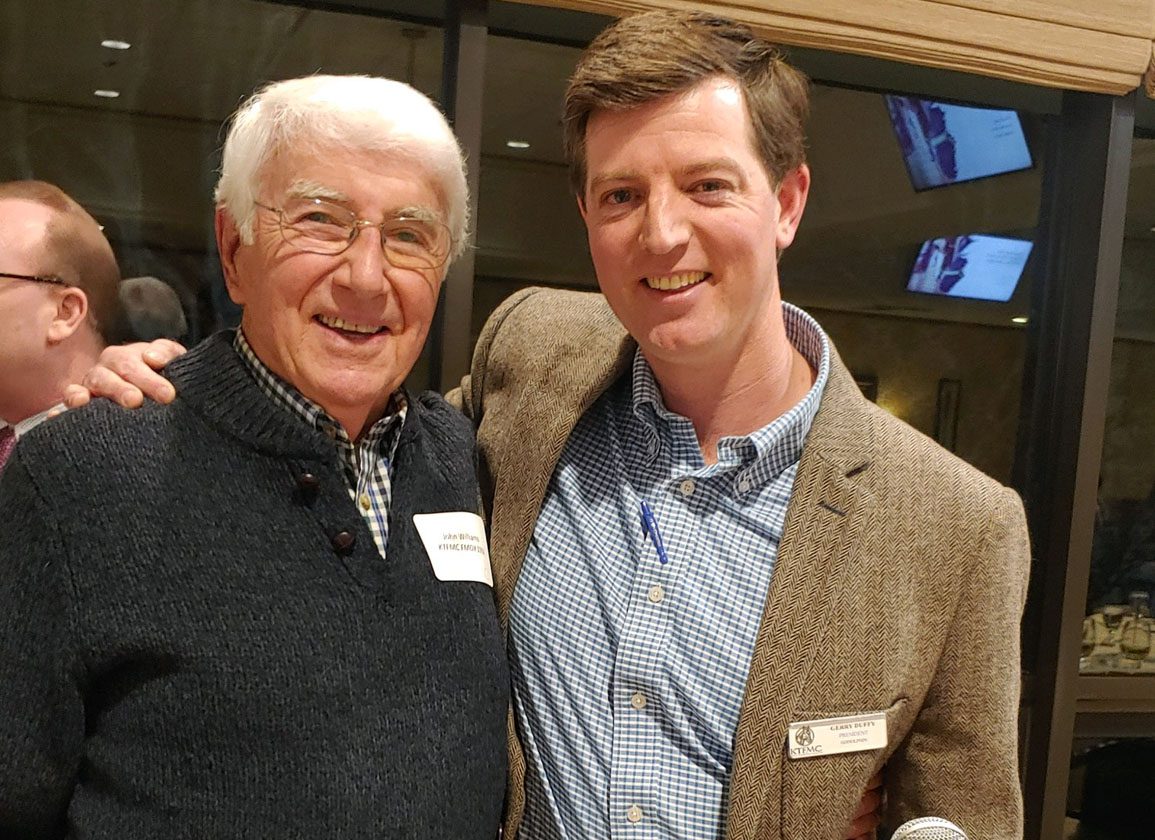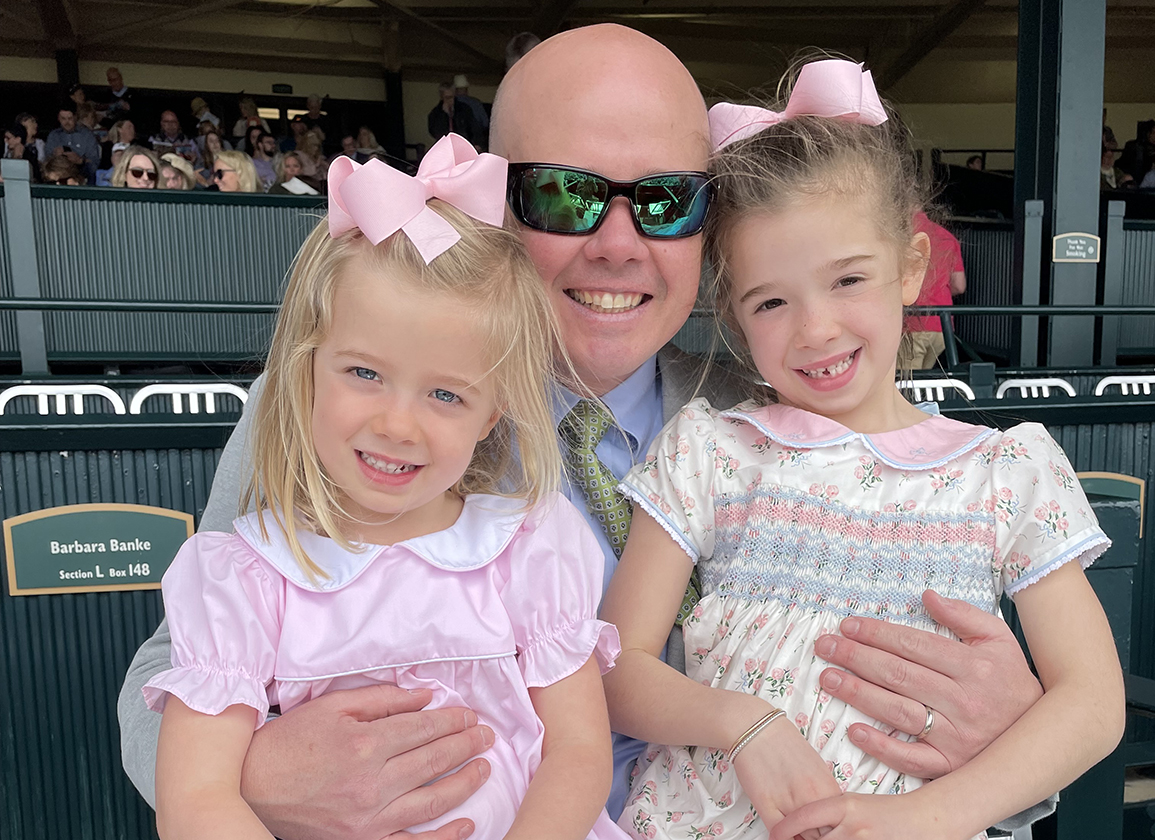English may be his second language, but it certainly would have been difficult to guess when 2nd grader Markus won his school's spelling bee and went on to compete against kids several years his elder in a district-wide spelling tournament.
Markus moved with his family to the U.S. several years ago when his parents started jobs working on a horse farm in Paris, Kentucky. His family valued education and after receiving a partial scholarship, Markus was able to attend St. Mary School in his new hometown, where his principal Miranda Chaplin said he and his preschool-aged younger brother are model students.
“They are bright, respectful and incredibly hardworking,” she shared. “They are thriving at our school.”
Markus is one of the first young students to benefit from a newly formed fund dedicated to providing tuition assistance for children in Kindergarten through eighth grade whose parents or legal guardian work in the equine industry in Central Kentucky.
The Catholic Education Opportunities Foundation (CEOF)'s Equine Fund began as an idea years ago from Father Chris Clay and the Clay family of Runnymede Farm. The fund officially launched this year and in its inaugural academic season, 10 children applied for funding and each one received tuition assistance of some kind.
CEOF is a non-profit that has been in existence since 2018, serving the 12 Catholic schools based in Lexington and the surrounding areas of Woodford and Bourbon counties, Frankfort, Richmond, Georgetown, Winchester and on into Eastern Kentucky, but the fund dedicated specifically for equine industry participants and their elementary-aged children is the first and only one of its kind.
Taylor Made Farm's Mark Taylor and his wife Julia have been members of CEOF's leadership council from the very beginning. Julia later became a member of its official Board and also now serves on its financial committee.
Taylor spoke of the impact she has witnessed over the years with families receiving tuition assistance.
“The families and the kids are so grateful,” she said. “We've seen firsthand the difference that it makes. There are a lot of hardworking, great people that would like to send their kids to Catholic schools but can't quite afford it. We want to help these families bridge their financial gap and attend our wonderful schools.”
CEOF's Executive Director Kim Thompson said that scholarships provided by their organization are partially-funded–aimed to make Catholic education more affordable for families–and that the amount given to each family is determined by a third-party agency called FACTS.
She also explained that the funding is for children of any faith background and that the advantages of Catholic education can impact a child spiritually, but in other ways as well.
“We feel that this type of education gives children a leg up academically and offers families different opportunities,” she said. “There's a focus on values and service in their communities, so it's more than just the tradition of strong academics.”
St. Mary School is in the heart of horse country in Paris and Chaplin confirmed that the students reflect its agrarian setting. The principal noted that a quarter of their attendees have parents connected to the equine industry in some way, including a range of socioeconomic representation from farm owners and farm managers to farm workers.
Chaplin said the equine fund has the potential to benefit a large number of families in their community.
“The goal of the equine fund is to create more accessibility so that families have the opportunity to provide their children with the best education choice for their family,” she explained. “For some of our families–thinking specifically about folks who are farm labor–they might not otherwise have access to a Catholic education if it was not for the help of scholarships and financial assistance.”
In recent years, Chaplin said, their numbers have increased thanks in part to the funding provided by the CEOF that has made education options more affordable.
“Since the start of the pandemic, our school has doubled in enrollment,” she said. “Because families are looking for more education opportunities for their families, the need for financial assistance has also grown.”
Godolphin's Gerry Duffy is a member of the CEOF's leadership council and is also on the Equine Fund's committee. He said that funding from this project could have a lasting impact on the industry and its participants.
“If you want to change your environment or change your community, give people an education,” he said. “I think a lot of people realize that and are happy to give those opportunities to kids within the horse industry. It's another way to add value to our employees. Helping their kids with their education is one of the best things you can do for someone. If we can make a difference and help out some of those families and give some of those kids an opportunity, we should.”
CEOF is now working to get the word out on their fledgling fund for the next academic year–both to families that may apply for funding and industry members that might be interested in getting involved. In addition to Runnymede, Taylor Made and Godolphin, the project has already gained early support from the likes of Hallway Feeds, Fasig-Tipton and Old Colony Insurance.
“We're still in the infancy stage of the CEOF Equine Fund and we're really focusing on getting the word out to people in the horse industry,” Taylor said. “The ultimate goal is to build this fund up so that it will produce income every year that we will then distribute to families for tuition assistance to keep it going. We're still in the building phase and we have big hopes for the future.”
Thompson shared that they have big goals for the coming years. They hope to double the number of children granted funding for the 2024-2025 school year and then continue to double that number for the next five years.
As the program's notoriety continues to grow within the industry, they could be well on their way to achieving just that.
“It's an exciting time for us,” Thompson said. “We really feel that this not only benefits the area's parochial schools with additional enrollment, but it also gives opportunities to families that otherwise may not be afforded them. Central Kentucky is the hub of the equine industry, so creating the CEOF Equine Fund just makes sense and now we're rapidly gaining momentum within the industry.”
To learn more about the Catholic Education Opportunities Foundation, click here.
The post CEOF Equine Fund Gains Momentum in Central Kentucky appeared first on TDN | Thoroughbred Daily News | Horse Racing News, Results and Video | Thoroughbred Breeding and Auctions.




